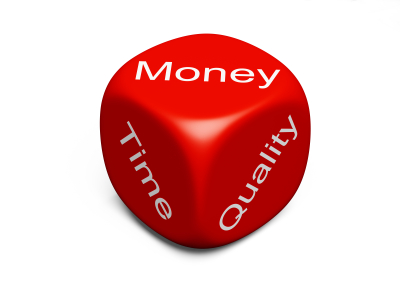
by Fronetics | Feb 25, 2015 | Blog, Content Marketing, Marketing, Social Media, Strategy

Answering the invariable question: “How often should I blog?”
“How often should I blog?” is a question we often get asked. The simple answer is: as often as possible so long as each post is valuable and as long as the quality doesn’t slip. Most people don’t like this response and push for something more tangible.
Research shows that blogging more frequently gets results
Research conducted by HubSpot found that companies with 51-100 pages on their website generate 48% more traffic than those with 1-50 pages. If you blog regularly your business could reach that 51 page threshold in less than one year.
HubSpot also found that companies who publish at least 15 blog posts per month get 5 times more traffic than those companies who don’t blog. Think this stat applies to big businesses? HubSpot found that small businesses with between 1 and 10 employees see the largest gains by posting more often.
Another reason to publish more often than less often: companies nearly double their sales leads by increasing blogging frequency from 3-5 times per month to 6-8 times per month.
Evidence shows that blogging more frequently gets results
At Fronetics we have seen these results first hand. To improve ranking, drive traffic, and increase leads we suggested that a client increase the number of blog posts published each week. The client was skeptical that increasing the blogging frequency would make a difference, especially to a company within the supply chain industry; however, they decided to give it a try. Within one month traffic increased by 23%, sales leads doubled, and the client landed a new customer.
Try increasing your blogging frequency for one month. Track your KPIs and assess whether increasing the blogging frequency is right for your business.
No matter how often you publish blog content make sure that your content retains these three elements:
- Consistent
- Quality
- Valuable
Fronetics Strategic Advisors is a management consulting firm focused on inbound marketing and strategy. We create and execute results-oriented programs for growth and value creation. Unlike other firms, our approach is data driven. We know ROI is important, so we track and measure results to drive success.


by Fronetics | Feb 24, 2015 | Blog, Supply Chain, Warehousing & Materials Handling

As more warehouses and distribution centers turn to intelligent, high-tech solutions, it is important to take advantage of technology to optimize the efficiency and ultimately increase the revenue of your business.
Smart technology now stretches into virtually every aspect of our lives, so it should come as no surprise that distribution centers worldwide are finding unique ways to leverage these smart technologies to increase efficiencies, reduce operating costs, and improve safety. A closer look at today’s available technology shows just how intelligent the tools for the materials handling, logistics, and supply chain industry have become and the transformative impact they can have on operations. Innovations such as voice tasking, warehouse robotics technology, microprocessors, and the talking lift truck are fundamentally changing the way business is being done. Those who stay on top of these innovations gain an invaluable lead on the competition.
One such company realizing significant benefit from employing new technologies is Genco Supply Chain Solutions. Looking to improve routing and slot optimization while simplifying the receiving and retrieving processes at their 200,000-square-foot facility, Genco started using the Total Trax Sky-Trax Solution. TotalTrax Smart Truck Solutions turns traditional material handling vehicles into smart trucks. Image processing technology transmits images to a centralized monitoring system, giving supervisors real-time access to the warehouse. Genco’s results after implementation: a 12% increase in facility throughput, 99.9% inventory accuracy, a 20% increase equipment utilization, and a reduction of more than 50% in training time.
“With gained visibility to inventory and vehicle movement, we are now able to analyze each operator’s performance, including the amount of idle time and time spent with no load,” Cary Cameron, Genco’s vice president of strategic technologies, said in a press release. “The data and reporting Sky-Trax provides allows us to analyze the root cause [using Lean Six Sigma] and measure processes we’ve never been able to see before.”
Value is delivered in increased accountability and visibility as supervisors can make critical dispatching decisions in real-time and review historical data for improving operations. In numbers, the use of smart trucks for automatic inventory tracking routinely translates into 30% higher productivity. Drivers can focus on what they do best: driving. Customers can also count on substantial labor savings and improved OSHA safety compliance as a result of the uninterrupted monitoring of the warehouse.
As more warehouses and distribution centers turn to intelligent, high-tech solutions, it is important to take advantage of technology to optimize the efficiency and ultimately increase the revenue of your business. Keeping up with this kind of innovation can help any organization achieve better business results. Even more importantly, you should make sure your organization uses its smart system for a breadth of capabilities and applications to ensure getting the most out of it.
Is your business using smart technologies? If so, which ones have had the biggest impact?

by Fronetics | Feb 24, 2015 | Blog, Supply Chain, Warehousing & Materials Handling

As more warehouses and distribution centers turn to intelligent, high-tech solutions, it is important to take advantage of technology to optimize the efficiency and ultimately increase the revenue of your business.
Smart technology now stretches into virtually every aspect of our lives, so it should come as no surprise that distribution centers worldwide are finding unique ways to leverage these smart technologies to increase efficiencies, reduce operating costs, and improve safety. A closer look at today’s available technology shows just how intelligent the tools for the materials handling, logistics, and supply chain industry have become and the transformative impact they can have on operations. Innovations such as voice tasking, warehouse robotics technology, microprocessors, and the talking lift truck are fundamentally changing the way business is being done. Those who stay on top of these innovations gain an invaluable lead on the competition.
One such company realizing significant benefit from employing new technologies is Genco Supply Chain Solutions. Looking to improve routing and slot optimization while simplifying the receiving and retrieving processes at their 200,000-square-foot facility, Genco started using the Total Trax Sky-Trax Solution. TotalTrax Smart Truck Solutions turns traditional material handling vehicles into smart trucks. Image processing technology transmits images to a centralized monitoring system, giving supervisors real-time access to the warehouse. Genco’s results after implementation: a 12% increase in facility throughput, 99.9% inventory accuracy, a 20% increase equipment utilization, and a reduction of more than 50% in training time.
“With gained visibility to inventory and vehicle movement, we are now able to analyze each operator’s performance, including the amount of idle time and time spent with no load,” Cary Cameron, Genco’s vice president of strategic technologies, said in a press release. “The data and reporting Sky-Trax provides allows us to analyze the root cause [using Lean Six Sigma] and measure processes we’ve never been able to see before.”
Value is delivered in increased accountability and visibility as supervisors can make critical dispatching decisions in real-time and review historical data for improving operations. In numbers, the use of smart trucks for automatic inventory tracking routinely translates into 30% higher productivity. Drivers can focus on what they do best: driving. Customers can also count on substantial labor savings and improved OSHA safety compliance as a result of the uninterrupted monitoring of the warehouse.
As more warehouses and distribution centers turn to intelligent, high-tech solutions, it is important to take advantage of technology to optimize the efficiency and ultimately increase the revenue of your business. Keeping up with this kind of innovation can help any organization achieve better business results. Even more importantly, you should make sure your organization uses its smart system for a breadth of capabilities and applications to ensure getting the most out of it.
Is your business using smart technologies? If so, which ones have had the biggest impact?

by Fronetics | Feb 23, 2015 | Blog, Content Marketing, Data/Analytics, Marketing, Strategy

Measuring blogging ROI is crucial to your overall marketing success.
Just as with outbound marketing activities, your company’s inbound marketing efforts should be given the same attention when it comes to Return on Investment (ROI) analysis. In fact, companies who measure inbound marketing ROI are more than 12 times more likely to generate better year-over-year returns. And with blogging being reported as the number one method for increasing website traffic, it should stand to reason that calculating ROI for your blogging efforts is crucial to your overall inbound marketing success.
Calculating ROI for blogging activities isn’t as straightforward as say, ROI from click-to-conversion, but its achievements can be measured in other ways. Consider employing a blend of these four categories to measure the effectiveness of your blogging efforts.
Audience and Content Reach
According to a 2013 HubSpot report, 85% of marketers reported increased web traffic within seven months of beginning inbound marketing activities. While it’s true that building a successful blog can take some time, there are things you can do (and measure) to speed its maturity. Encourage engagement and reach by crafting relevant and interesting content for your audience. This increases the likelihood your content is shared and commented on by your readers.
Track this: Beyond noting any increases in web traffic, track both your average cost per view and the number of comments and social shares your blog content receives.
Lead Generation
Tying revenue directly to publishing and distributing blog content can be difficult. Thinking about blogging activities within the context of your entire sales funnel can make it easier to determine effectiveness. As blog content is typically used to attract leads, encourage readers to subscribe to your blog or submit contact info to get higher-value content. Continued engagement nurtures leads and moves them further down the sales funnel.
Track this: The cost to get a lead. You can then determine the percentage of leads that move on to become qualified leads, the percentage of qualified leads that then become opportunities, and the percentage of opportunities that are ultimately won. At the end of the day, you’ll be able to calculate the revenue generated from leads that entered the funnel from blog content.
Intangibles
What are you gaining from networking with industry peers? Has your blog played a role in developing and nurturing professional relationships? Could you consider your blogging activities as part of your professional development? Blogging provides benefits outside of traditional marketing ROI measurements. Time spent researching, networking, writing, and engaging with others in your industry should certainly be considered when determining overall usefulness of blogging.
Track this: Sales cycle times. Staying current with industry trends and building a reputation as the go-to industry expert can be reflected in the type of customers and clients you are attracting. Are you attracting more high-quality leads and closing more ideal customers? Thank your blogging activity.
Cost of Customer Acquisition (CoCA)
By understanding how much it costs your business to acquire a new customer, you gain valuable insight into how much your business should be investing on blogging activities.
Track this: Calculate your (CoCA) by dividing your cost to blog by the number of visits the blog. For example, let’s say your company spent $500 on writing a blog post and 100 people visited your site. Your Cost of Visitor Acquisition will be $5 ($500 divided by 100). If 5% of those blog visitors convert into a lead then your Cost of Lead Acquisition (CoA) is $100 ($500 divided by 5 customers). If 10% of those leads actually buy something from you, your final Cost of Customer Acquisition is $50. Investing in one blog post will yield one new customer for every $50 you invest.
While it can feel a little unwieldy to measure ROI from blogging activities, keeping a strong focus on blogging goals and objectives will help to lend weight to metrics that will ultimately matter the most to you and your business. What measures does your company use to measure ROI for blogging?

by Fronetics | Feb 23, 2015 | Blog, Content Marketing, Data/Analytics, Marketing, Strategy

Measuring blogging ROI is crucial to your overall marketing success.
Just as with outbound marketing activities, your company’s inbound marketing efforts should be given the same attention when it comes to Return on Investment (ROI) analysis. In fact, companies who measure inbound marketing ROI are more than 12 times more likely to generate better year-over-year returns. And with blogging being reported as the number one method for increasing website traffic, it should stand to reason that calculating ROI for your blogging efforts is crucial to your overall inbound marketing success.
Calculating ROI for blogging activities isn’t as straightforward as say, ROI from click-to-conversion, but its achievements can be measured in other ways. Consider employing a blend of these four categories to measure the effectiveness of your blogging efforts.
Audience and Content Reach
According to a 2013 HubSpot report, 85% of marketers reported increased web traffic within seven months of beginning inbound marketing activities. While it’s true that building a successful blog can take some time, there are things you can do (and measure) to speed its maturity. Encourage engagement and reach by crafting relevant and interesting content for your audience. This increases the likelihood your content is shared and commented on by your readers.
Track this: Beyond noting any increases in web traffic, track both your average cost per view and the number of comments and social shares your blog content receives.
Lead Generation
Tying revenue directly to publishing and distributing blog content can be difficult. Thinking about blogging activities within the context of your entire sales funnel can make it easier to determine effectiveness. As blog content is typically used to attract leads, encourage readers to subscribe to your blog or submit contact info to get higher-value content. Continued engagement nurtures leads and moves them further down the sales funnel.
Track this: The cost to get a lead. You can then determine the percentage of leads that move on to become qualified leads, the percentage of qualified leads that then become opportunities, and the percentage of opportunities that are ultimately won. At the end of the day, you’ll be able to calculate the revenue generated from leads that entered the funnel from blog content.
Intangibles
What are you gaining from networking with industry peers? Has your blog played a role in developing and nurturing professional relationships? Could you consider your blogging activities as part of your professional development? Blogging provides benefits outside of traditional marketing ROI measurements. Time spent researching, networking, writing, and engaging with others in your industry should certainly be considered when determining overall usefulness of blogging.
Track this: Sales cycle times. Staying current with industry trends and building a reputation as the go-to industry expert can be reflected in the type of customers and clients you are attracting. Are you attracting more high-quality leads and closing more ideal customers? Thank your blogging activity.
Cost of Customer Acquisition (CoCA)
By understanding how much it costs your business to acquire a new customer, you gain valuable insight into how much your business should be investing on blogging activities.
Track this: Calculate your (CoCA) by dividing your cost to blog by the number of visits the blog. For example, let’s say your company spent $500 on writing a blog post and 100 people visited your site. Your Cost of Visitor Acquisition will be $5 ($500 divided by 100). If 5% of those blog visitors convert into a lead then your Cost of Lead Acquisition (CoA) is $100 ($500 divided by 5 customers). If 10% of those leads actually buy something from you, your final Cost of Customer Acquisition is $50. Investing in one blog post will yield one new customer for every $50 you invest.
While it can feel a little unwieldy to measure ROI from blogging activities, keeping a strong focus on blogging goals and objectives will help to lend weight to metrics that will ultimately matter the most to you and your business. What measures does your company use to measure ROI for blogging?





